Segregated African American units served with distinction in Europe and the Pacific during World War II. None received the recognition they deserved. In recent years, some—such as the 761st Tank Battalion, the “Black Panthers”—have rightly garnered some attention. Others, though, have remained almost entirely forgotten, despite their excellent combat records. One of these was the 784th Tank Battalion, which proved to be one of the finest weapons in the American arsenal in 1945.
The 784th came late to the fight, but hit the enemy hard when it arrived. Activated in April 1943 as part of the 5th Tank Group alongside the African American 758th and 761st Tank Battalions, the 784th trained at Camp Claiborne, Louisiana. It was a far from pleasant place to work, and one of the recruits appropriately described the local town of Alexandria as a “hellhole.” In camp, African American soldiers were subject to discrimination and ill treatment by white military policemen and bus drivers. In town, though, they were liable to be bullied, beaten up or murdered by racist civilians. Fort Hood, Texas, where the men trained intensively in light Stuart and medium Sherman tanks, seemed like paradise by comparison.
Leaving Camp Hood in October 1944, the 784th Tank Battalion shipped to Europe, staying over briefly in England before moving to France at Christmas. The unit then moved to the front in the vicinity of Aachen, Germany. At the front, the tankers discovered a changed atmosphere. In camp, and in the rear areas among untested units, black soldiers frequently faced racism from their white comrades in uniform. Under fire, though, things often were different. The officers and men of the 104th Infantry Division, to which the 784th initially was attached, welcomed the African American unit and helped prepare the tankers for combat under harsh winter conditions.
While combat was sporadic in January 1945—the 784th Tank Battalion was not involved in the Battle of the Bulge—the cold was severe and many men fell victim to frostbite. Men called their icy metal tanks “armored Frigidaires” after the popular brand of refrigerator. In February, the 784th was sent forward to Geilenkirchen, along Germany’s Siegfried Line, where it was attached to the 35th Infantry Division.
This division would later report that the 784th Tank Battalion was “an effective, courageous, and dependable unit which earned the respect and admiration of the infantrymen who worked together well with the tankers.”
The pressures of combat would forge that bond.
In February 1945 the 784th Tank Battalion furnished support for 35th Division infantry operations along the Roer River; but at the beginning of March the tankers finally moved out as part of Task Force Byrne, slashing through the German defenses and liberating the Dutch town of Venlo. Suddenly now, after weeks of static warfare, the tankers were moving fast. James Hamilton, driving a Sherman in C Company, remembered that “we were moving so fast that when we came around a turn in town, I slide right through a house. I mean we tore the whole house down.” This accident notwithstanding, Dutch civilians welcomed their black liberators. Some tankers would form relationships with local women. Others, killed in action, would be buried in the Netherlands American Cemetery in Margraten.
Past Venlo and moving back into Germany, the tankers faced rapidly increasing enemy opposition. German infantry with panzerfaust anti-tank weapons knocked out American tanks that outdistanced their infantry support, and mines also took a heavy toll. In the town of Sevelen, German defenders attempted to spring a trap on the tankers by blowing a bridge, forcing the Shermans and their supporting halftracks to halt, and then taking them under concentrated anti-tank, mortar and small arms fire. But the Americans fought back fiercely, eventually shattering the German defenses and capturing the town. Sergeant Bill Hughes, who had fired his machine gun until the barrel was too hot to touch, recalled that “Our morale was very high. The force had blasted its way out of a trap that was designed to seal its doom. The Battalion motto ‘It Will Be Done’ became so clear and we were proud.”
Still, German resistance continued to stiffen as the tankers advanced. Enemy anti-tank weapons took a grim toll of the vulnerable Shermans and thin-skinned Stuarts. The 784th Tank Battalion support personnel, who were cut off, were beaten and murdered by their Nazi captors. In combat, though, the bonds between white infantrymen and black tankers grew stronger. In one town, Intelligence officer Orval Faubus entered a church where “a GI was playing the chapel organ and a Negro soldier was singing with deep feeling an old familiar religious hymn . . . Other battle-strained GIs listened with weary, strained faces turned toward the singer and the player.”
War correspondent Ted Stanford of the Pittsburgh Courier interviews 1st Sgt. Morris O. Harris of the 784th Tank Battalion. Courtesy National Archives.
On March 26-27, the 784th Tank Battalion crossed the Rhine River and drove deep into Germany, the Shermans often carrying squads of 35th Division infantrymen. To this point the battalion, with an original complement of almost 700 men, had suffered about 200 casualties including 20 killed in action. And the casualties continued. Infantryman James Graff was riding one Sherman when an enemy panzerfaust hit the tank and knocked it out; German machine gunners and a 20mm gun then opened fire on the soldiers and tankers as they bailed out. “The panzerfaust had blown the leg off of one of our machine gunners,” he remembered. “Most of the tank crew had been wounded by the 20mm fire as they abandoned the tank; one man was hit in the elbow. Our medic amputated his arm with a pair of surgical scissors.”
Participating in the capture of the Ruhr Pocket and then driving toward the Elbe River, the men of the 784th had another ugly surprise in store. On one spring morning, Staff Sergeant Franklin Gerrido recalled: “The sky was clear, dew was on the ground, and I was lulled into daydreaming about Los Angeles and the California girls. And then I saw this large tall spiral of black greasy smoke ascending into the sky. . . . When we rounded the curve, I saw this compound. There was a large hangar-like building surrounded by a wire fence. On the nearest corner, there, what I thought was laundry. As we got closer, I saw the clothes, to my horror, were human skeletons, alive! Human skeletons were hanging onto the fence begging us with their eyes to help them.”
After witnessing this small corner of the Nazi genocide, meeting with Soviet soldiers at the Elbe River offered a pleasant contrast for the battle-tested men of the 784th Tank Battalion. “What a meet up with singing and dancing all night long,” Sergeant Hughes remembered, “not to mention that homemade vodka the soldiers were drinking. I tasted it with a quick gulp and choked with a burning throat. Gasping, water only made it worse. It took me almost 20 minutes to recover.”
The 784th Tank Battalion participated over the next several months in the occupation of Germany, and as the men decompressed, some formed relationships with German women. Their relief was compounded by fear, however, for the battalion was designated to be shipped to Asia for the impending invasion of Japan. Like other Americans, the tankers reacted with relief when they learned of the dropping of the atomic bombs and the end of World War II. In December 1945 they were shipped back to the United States, wondering after all they had experienced what kind of welcome they could expect to receive.
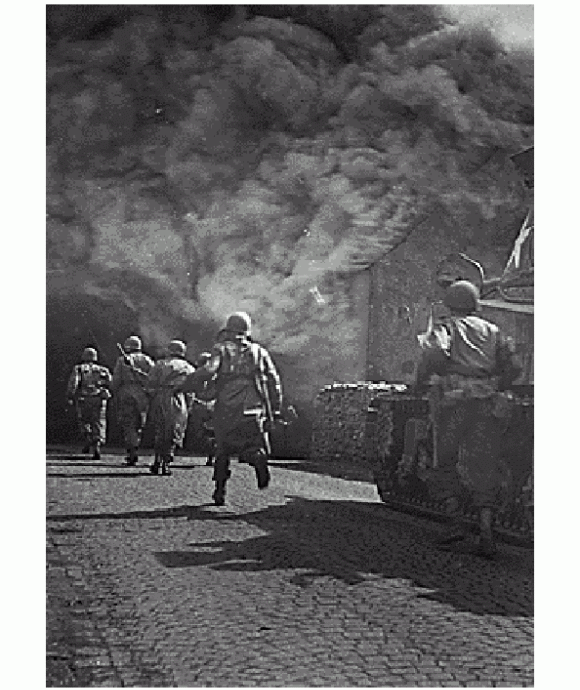
All the Way: the 614th Tank Destroyer Battalion Cracks Germany's Siegfried Line, 1945
The African American 614th Tank Destroyer Battalion's aggressive assault across Germany's Siegfried Line in 1945 earned the respect and camaraderie of white GIs in the front lines.
This article is part of an ongoing series commemorating the 75th anniversary of the end of World War II made possible by Bank of America.
Ed Lengel, PhD
Edward G. Lengel is the former Senior Director of Programs for the National WWII Museum’s Institute for the Study of War and Democracy.
Cite this article:
MLA Citation:
APA Citation:
Chicago Style Citation:
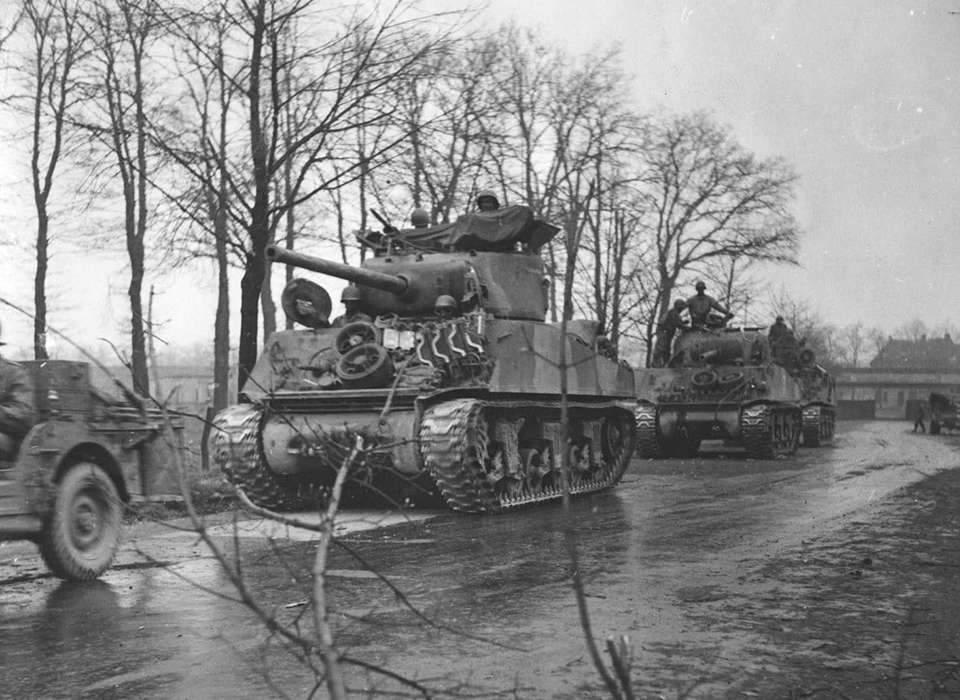
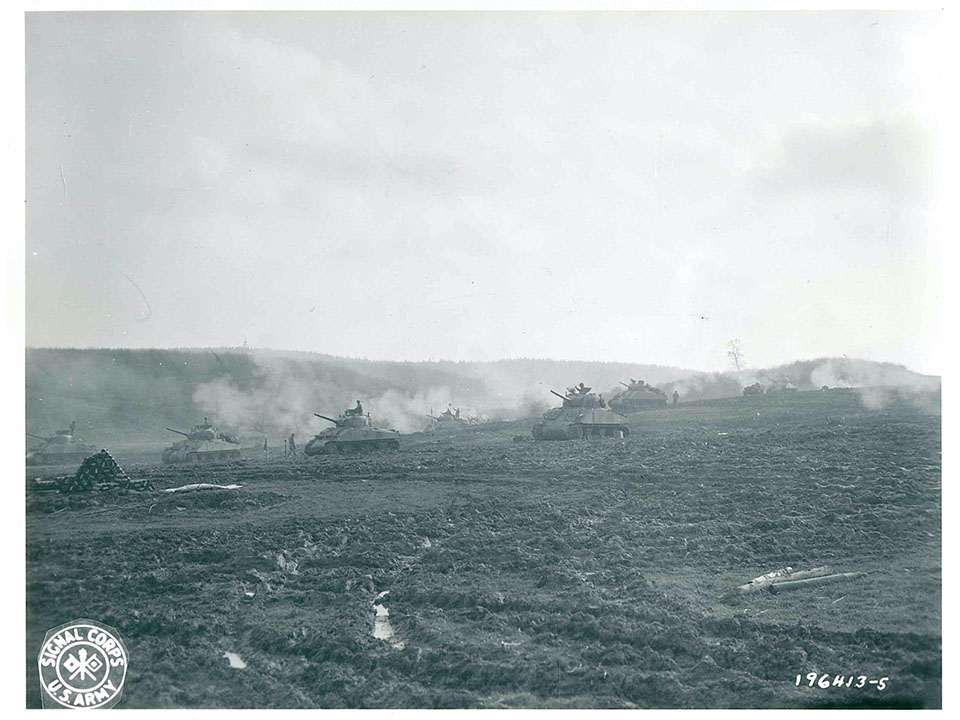
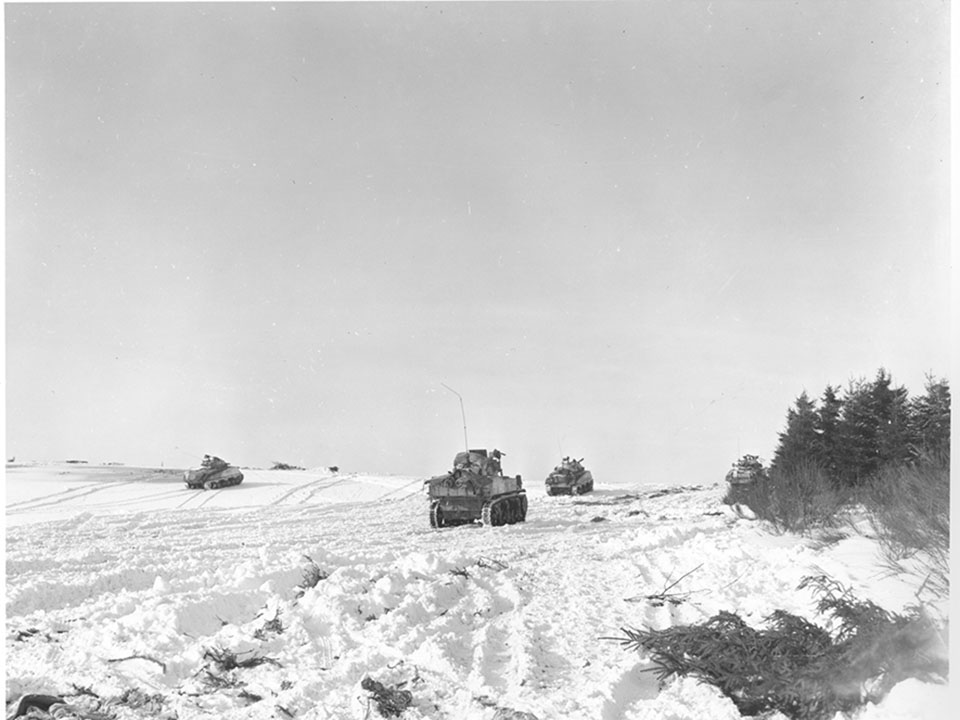
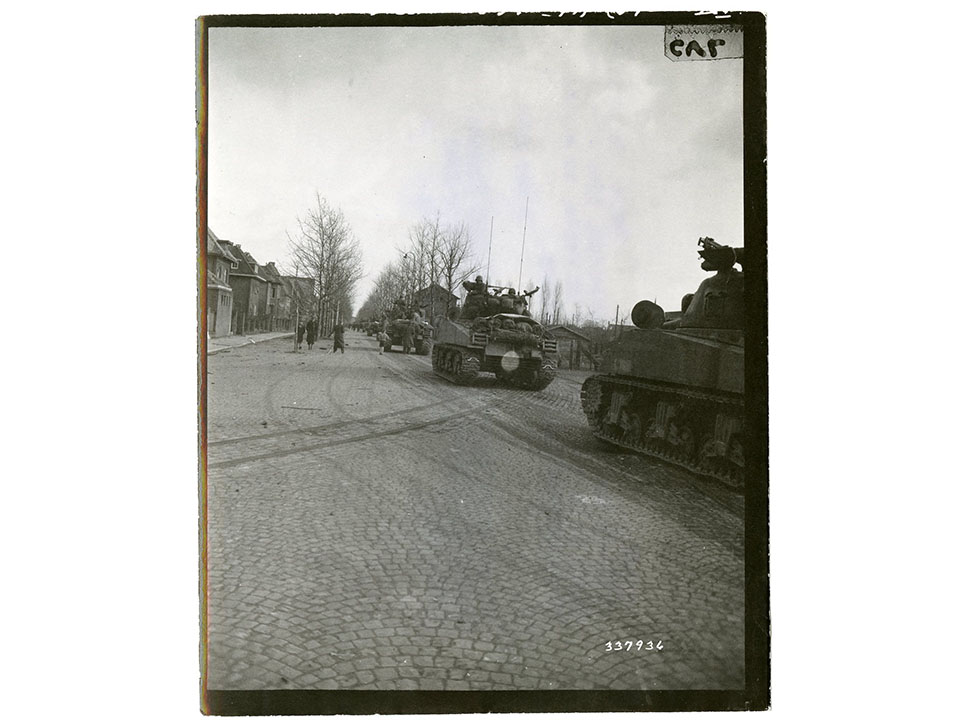
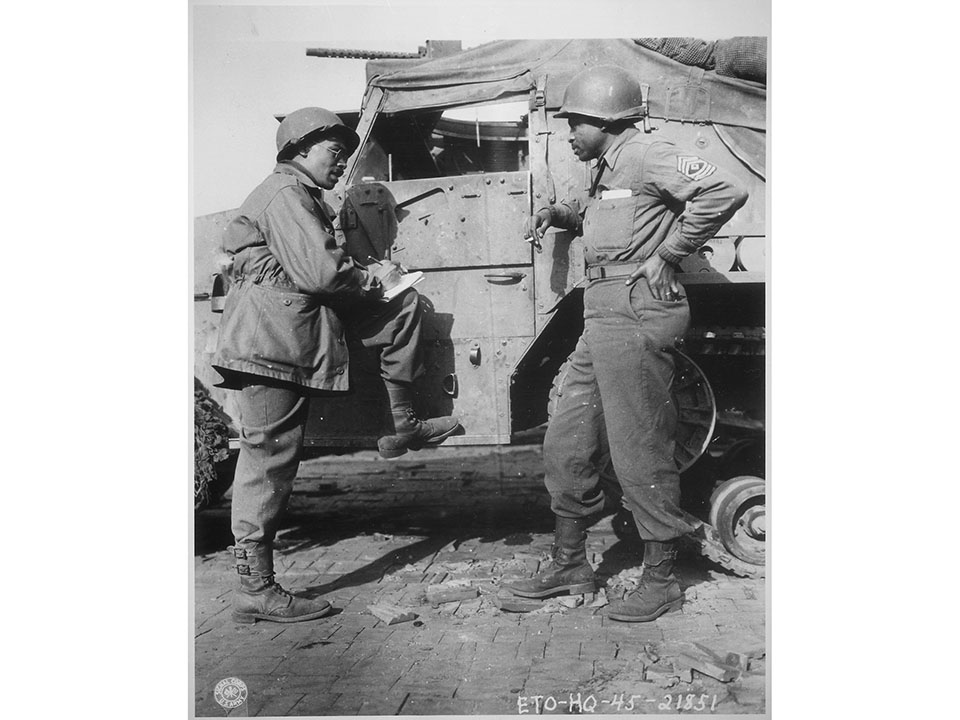
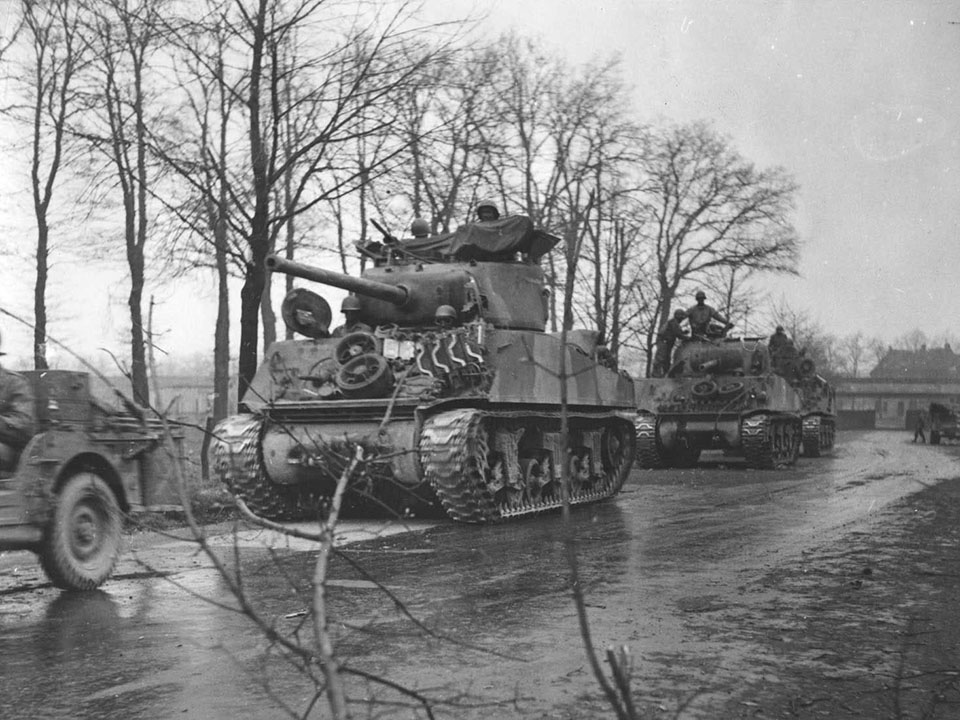






![Max Fuchs, New York City cantor, sings as Rabbi Sydney [sic] Lefkowitz, Richmond, VA, conducts the first Jewish services from Germany.](/sites/default/files/styles/max_650x650/public/2025-10/image1.jpg)


